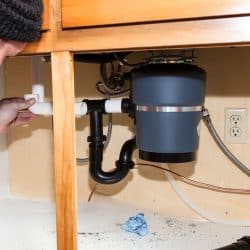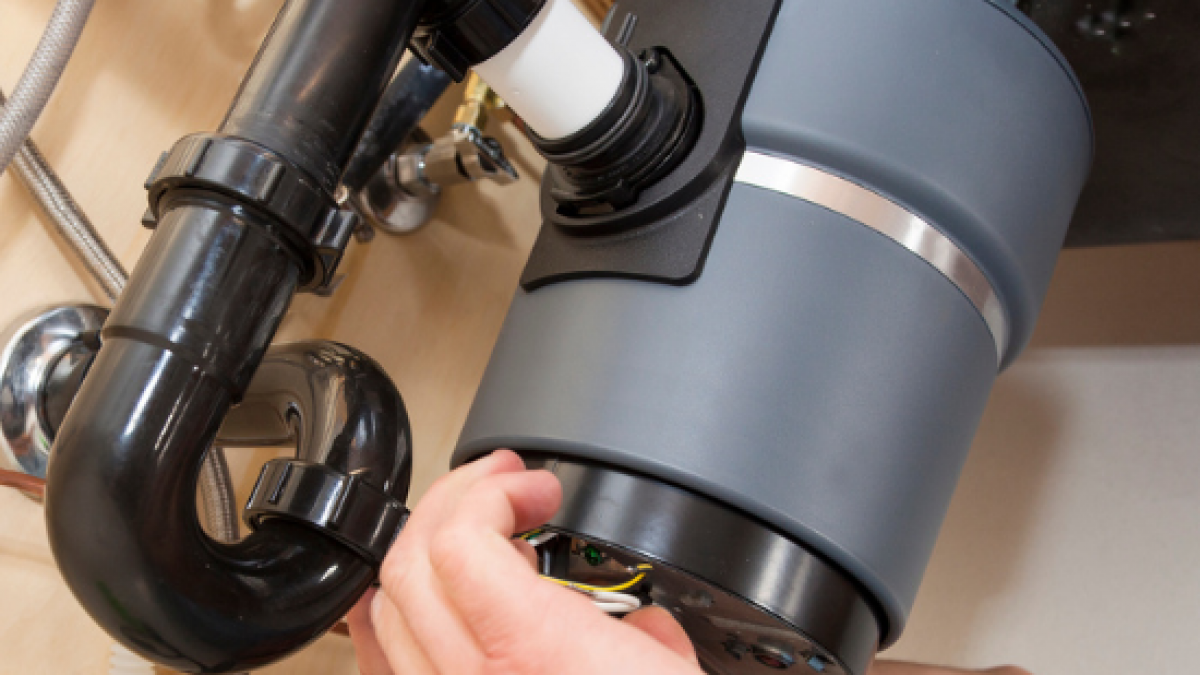What're your thoughts and feelings on Why Is My Garbage Disposal Leaking From the Bottom??

Waste disposal unit are essential cooking area home appliances that help in dealing with food waste efficiently. Nevertheless, a dripping waste disposal unit can be an aggravating and messy problem to manage. Luckily, many leakages can be fixed quickly with a few simple actions. In this short article, we will review how to take care of a dripping garbage disposal effectively.
Intro
Garbage disposals are mounted under cooking area sinks and are created to shred food waste right into smaller items, allowing it to travel through the plumbing system conveniently. While these devices are normally trusted, leakages can take place with time due to damage, loosened connections, or damage to the device.
Step-by-Step Overview to Repairing a Leaking Waste Disposal Unit
Shut off the Power
Prior to trying any type of repair work, make certain that the power to the waste disposal unit unit is shut off to stop the threat of electric shock.
Find the Leak
Recognize the exact location of the leak and figure out the reason
Tighten up Connections
Utilize a wrench to tighten any type of loose links in between the disposal unit and the plumbing system.
Replace Seals or Gaskets
If the leakage is due to worn seals or gaskets, eliminate the old parts and change them with brand-new ones.
Patching Cracks or Openings
For cracks or holes in the disposal device, use epoxy or a suitable patching product to seal the damaged area.
Recognizing the Resource of the Leakage
Prior to trying to fix a leaking garbage disposal, it is vital to determine the source of the leak. This can typically be done via visual evaluation or by carrying out easy examinations.
Visual Examination
Check the waste disposal unit device meticulously for any kind of indications of water leakage. Pay close attention to locations around seals, gaskets, and link factors.
Examining for Leakages
One method to check for leaks is by running water through the disposal unit and checking for any type of noticeable indications of leakage.
Common Causes of Leakages in Waste Disposals
Worn Seals and Gaskets
Seals and gaskets play a crucial function in protecting against water from leaking out of the garbage disposal. In time, these parts can degrade, causing leaks around the disposal unit.
Loose Links
The links between the garbage disposal and the plumbing system can become loosened in time, creating water to leak out throughout procedure.
Cracks or Openings in the Disposal System
Physical damage to the waste disposal unit, such as fractures or holes in the housing, can additionally result in leakages.
Tools and Products Needed for Taking Care Of a Leaking Waste Disposal Unit
Before starting the repair work procedure, collect the necessary devices and materials, consisting of a screwdriver, adjustable wrench, plumbing's putty, substitute seals or gaskets, and epoxy or patching product for repairing fractures or holes.
Checking the Garbage Disposal After Repair Service
When the repair work is complete, evaluate the garbage disposal by running water with it to ensure that the leakage has been settled.
Preventive Maintenance Tips to Avoid Future Leaks
To prevent future leaks, it is necessary to do normal upkeep on your garbage disposal. This includes maintaining it clean, preventing placing non-food items or tough objects down the disposal, and regularly looking for leakages or various other issues.
Conclusion
To conclude, taking care of a leaking garbage disposal is a reasonably uncomplicated process that can be completed with fundamental tools and materials. By adhering to the steps described in this post and exercising preventive maintenance, you can maintain your waste disposal unit in good working condition and avoid costly repair services in the future.
HOW TO REPAIR A LEAKING GARBAGE DISPOSAL
The first thing to do if your garbage disposal starts to leak or exhibits other symptoms of wear and tear is to inspect the appliance quickly. Before making any repairs, check for any obvious cracks or damaged parts and turn the disposal off at the power source. Once you have located the issue, several tools might assist you in solving it. Many resources are available to assist you in putting your disposal back in working order, whether by purchasing new parts or professional assistance from a repair technician. So immediately act if you need help with leaky garbage disposal. You can rapidly resolve the problem and enjoy smoothly functioning appliances with thorough troubleshooting and help from web resources.
Food waste is disposed of using a garbage disposal system, which grinds and flushes it down the toilet. A garbage disposal is a motorized device with one or more rotating blades that grinds up food waste into little bits. They are commonly found under the kitchen sink. A dishwasher inlet or connector is often built into garbage disposals, allowing extra water to drain into the sink’s dishwasher. Several things, such as clogs, worn-out components, or damage to the inside walls of the unit, can bring on garbage disposal leaks or other problems.
WHAT ARE SOME COMMON PROBLEMS WITH GARBAGE DISPOSALS?
Jamming: One of the most frequent issues with garbage disposals is jamming. It occurs when hard or fibrous materials, such as bones, potato peels, or fruit pits, get stuck in the disposal’s blades or impeller. It can prevent the unit from operating correctly or cause it to make unusual noises. Clogging: If too much food waste or non-food items are put into the disposal at once, it can lead to clogging. Clogged disposal may result in slow drainage or a complete backup of water in the sink. Grease and fats can also solidify inside the disposal and contribute to clogging. Leaks: Garbage disposals can develop leaks over time. The most common areas for leaks are the sink flange, the discharge pipe connections, or the dishwasher connection. Leaks can cause water damage and need to be addressed promptly. Foul odors: Food residue can build up in disposal over time and cause unpleasant odors. Bacteria and mold growth inside the unit can also contribute to foul smells. Dull blades: The grinding blades in the disposal can become dull over time, resulting in inefficient chopping and grinding of food waste. That may lead to more frequent jams and increased strain on the motor. HOW CAN YOU TELL IF YOUR GARBAGE DISPOSAL IS LEAKING?
Visible water: Check underneath the sink where the garbage disposal is installed. If you notice water pooling or dripping around the unit or any adjacent pipes, it’s a clear sign of a leak. Musty odor: A persistent or moldy smell from your kitchen sink area could indicate a hidden leak. The moisture from a leaking garbage disposal can create a damp environment that promotes mold and mildew growth. Water damage: Examine the area surrounding the garbage disposal for any signs of water damage. Look for water stains, discoloration, or warping on the cabinet floor or walls beneath the sink. Decreased performance: A leak in the garbage disposal can affect its functionality. If you notice that the disposal is not grinding food waste properly or is making unusual noises, it could be due to water damage or a leak compromising its mechanisms. Rust or corrosion: Inspect the garbage disposal for any signs of rust or corrosion. A leaking unit can cause metal components to deteriorate over time. Look for rust-colored stains or deterioration on the disposal unit or surrounding pipes. https://theappliancepeople.com/how-to-repair-a-leaking-garbage-disposal/

Hopefully you enjoyed reading our topic on Garbage Disposal Leaking From Bottom. Thanks for taking time to browse our posting. In case you enjoyed our blog entry kindly remember to pass it around. I appreciate reading our article about Garbage Disposal Leaking From Bottom.
About This